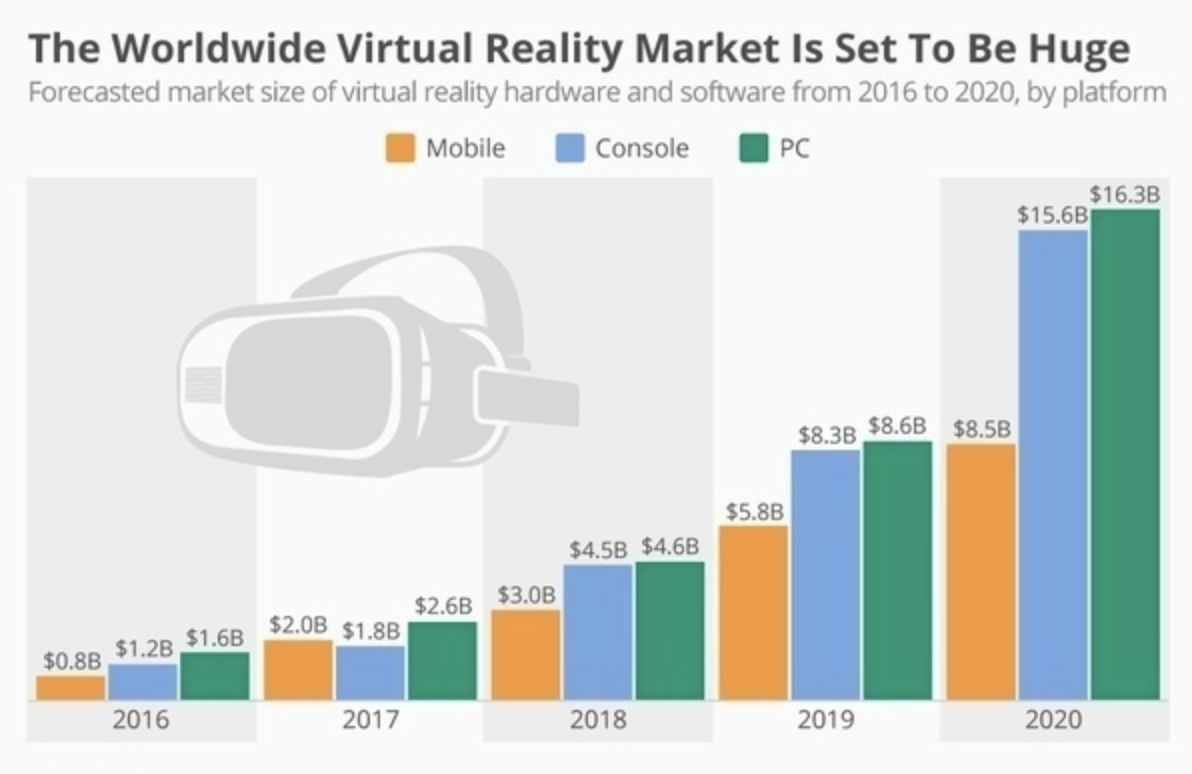How Unity Is Using VR To Create Immersive Experiences
Posted By : Sakshi Chhabra | 01-Sep-2020
Learn how Unity is using VR to create immersive experiences. Unity is the best in class real-time 3D creation platform. In this blog, you’ll see that you can not only use Unity to make games with VR functionality but also to create interactive media.

The world of VR is broad and diverse. Unity and VR are not only used for Gaming, there are many experiences out there — 360-degree videos, architecture, industrial, medical use and education, and so on. Unity Engine is the most widely used VR development platform and especially most of HoloLens device experiences are Made with Unity. Unity highly optimized pipeline and the rapid iteration capabilities of the unity editor make VR creative vision a reality. On the VR side, the big device and software players are Oculus Quest, Oculus Rift, HTC Vive, and Microsoft and its Windows Mixed Reality ecosystem. Unity Builds Games and applications for all of these devices.
More About Virtual Reality:
Virtual reality is the term used to describe a computer-generated environment that someone can explore and interact within the real world. A user is fully immersed in the environment and the brain is tricked into thinking what someone is seeing in the virtual world to reality.
Why Unity for VR?
Unity supports all the latest and big platforms. Unity has a support of various VR devices includes Oculus Rift, Steam VR HTC-Vive, Playstation VR, Gear VR, Microsoft HoloLens, and Google’s Daydream View.
- Unity has a feature to support a highly-optimized stereoscopic rendering pipeline and the tools to help to provide optimize content.
- It has a feature to Make a platform-specific build just like that, tweak some values, and build again.
- It Supports versatile VR/AR API.
- It Delivers the best possible VR Development experience.
- Easy VR integration with Unity:
- Unity VR targets virtual reality devices directly from Unity, without any external plugins. It provides an API and feature set with compatibility for multiple devices. It has been designed to provide forward compatibility for various devices.
Software
Windows: Windows 7, 8, 8.1, and Windows 10 are all compatible.
Android: Android OS Lollipop 5.1 or higher.
OS X: OSX 10.9+ with the Oculus runtime.
Graphics card drivers: Drivers should be up to date.
Oculus Runtime: Runtime 0.8 or higher.
Virtual Reality Market Growth:
The virtual reality market size was valued at USD 10.32 billion in 2019 and is expected to grow at a compound annual growth rate (CAGR) of 21.6% from 2020 to 2027. Virtual reality is a computer interface that delivers an immersive 3-dimensional visual experience to the users. It creates a simulated environment using high-performance equipment, such as gloves and VR headsets. Apart from the gaming and entertainment industry, this technology has been used for training and educational use cases. Educational use cases include training surgeons and airline pilots and helping scientists to understand complex problems. Besides, VR applications allow teachers to guide students through 360 degrees scenes and 3D objects.
Today’s Virtual reality proves that now more than ever, innovative marketing strategies involve offering some sort of unique experience.

Virtual Reality in Marketing
VR opens the doors to interactive, creative, content, and adds. However, virtual reality itself should not be considered as a marketing message. The virtual reality impact can make on an ad campaign is huge, and yet it still has to provide valuable branded experiences. Virtual reality marketing provides customers a chance to explore products without stepping into the store that allows exploring room departments at any time. This enabled customers to browse and even buy products without leaving their couch. VR marketing allows companies to cover the gap between experience and action. we can use VR to offer a digital experience in place of a physical one, which can promote products and services.
VR changes the dynamic between brands and consumers. instead of using ad blockers or clicking out of ads as quickly as possible, people seek out VR brand experiences. VR provides a huge advantage, especially as the technology is only going to become more and more popular. Marketers are now using VR technologies to explore and sell their products.
We are a seasoned AR VR app development company that specializes in building high-quality virtual reality apps that deliver immersive user experiences. Our development team uses advanced frameworks and tools like Unity, Vuforia, Argon.js, and React VR to build high-graphics VR apps that maximize user engagement. Explore are virtual reality app development services here. For more information, contact us at [email protected].
Cookies are important to the proper functioning of a site. To improve your experience, we use cookies to remember log-in details and provide secure log-in, collect statistics to optimize site functionality, and deliver content tailored to your interests. Click Agree and Proceed to accept cookies and go directly to the site or click on View Cookie Settings to see detailed descriptions of the types of cookies and choose whether to accept certain cookies while on the site.










About Author
Sakshi Chhabra
She has experience with Unity Engine to develop apps, games, and also has knowledge of new immersive technologies like Augmented Reality, Virtual Reality, Mixed Reality. She has knowledge of C# language and can build and deploy in multiple platforms.